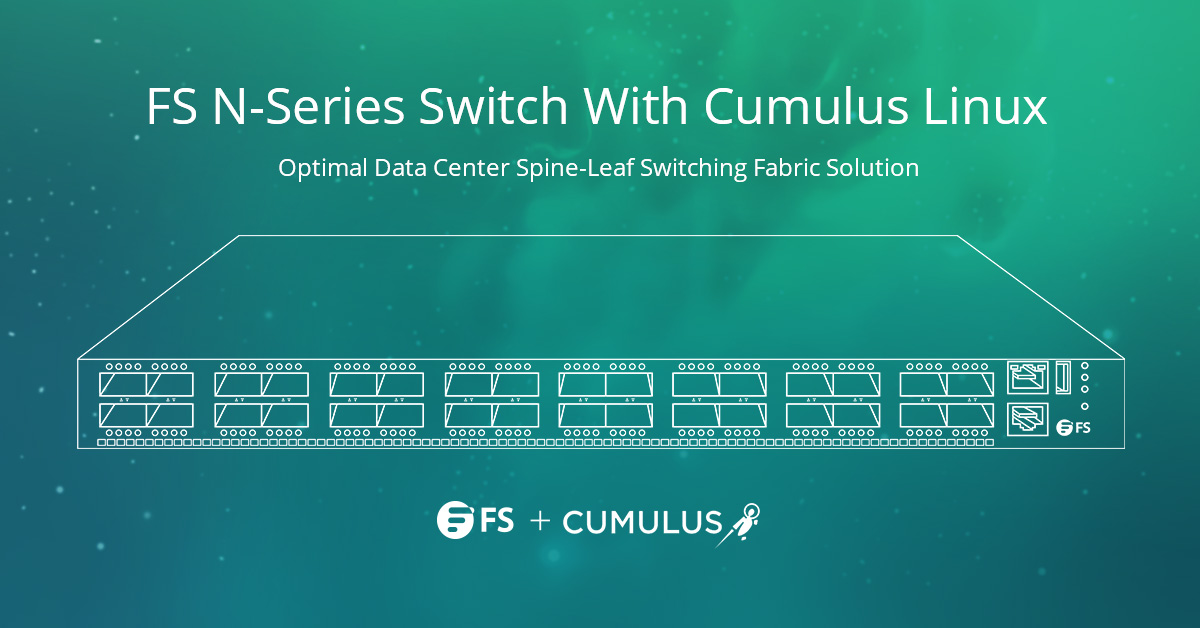Open networking seems to be more and more popular compared with traditional networks at present. As one of the most important parts in open network, open source switch has raised much attention. Then, what is open source switch? Why should you use it? Just read through this post to get all the answers as well as the introduction on different types of open source switches.
What Is Open Source Switch?
Normally, an open source switch is a network switch whose hardware and software are provided by separate entities and can be changed independently without affecting each other. That is to say, the open source switch hardware can support multiple operating systems of different vendors, or the same operating system can be run on multiple hardware configurations.
It is obvious that the open source switches are contrary to closed switches, whose hardware and software are always purchased together. For example, if you buy a Juniper EX or MX, you need to buy JUNOS. If you buy a Cisco Catalyst switch, you have to buy IOS. By contrast, open source switch is full of choice. It gives vendors choice of rebranding an open switch by adding their own software and selling it all as a package.
Open Source Switch Types
Normally, open source switch can be divided as three types, namely, bare metal switch, white box switch and brite box switch.
A bare metal switch is an open source switch which is not loaded with any operating system and the open source switch hardware in it only has basic support from original design manufacturer. It comes with a boot loader called the Open Network Install Environment (ONIE), which allows you to load an operating system onto the switch. For such switch, you can choose to load the open source switch OS you want at any time. You can choose the applications you need to run first, and then choose the operating system that best supports the applications or best fits your operational environment. Finally, you choose the hardware to run it all. This is kind of like how we’ve been building servers.
A white box switch can be regarded as a bare metal switch with network OS preloaded. Such switch is also non-branded. It’s still an open switch because the OS and the hardware are not integrated. You just got a package of a bare metal switch and an operating system.
A brite box switch is made by an Original Design Manufacturer (ODM), and is often the same switch offered by the ODMs as bare metal but with a brand name like Dell or HP. It can be regarded as a branded white box switch.
Why Should You Use Open Source Switch?
From the definition and different types of open source switch, you may find it beneficial to use it. It has the following advantages:
- Multiple choice: There’s a multitude of operating systems you can load for different needs, such as Broadcom’s FastPath, Big Switch Networks’ Switch Light, Cumulus Networks’ Cumulus Linux, Pica8’s PicOS, etc.
- Flexible software solution: It offers composable networking solution with open source Network Operating System (NOS). You can replace the NOS you installed before and then choose another one for your actual needs.
- Enable premium NOS applications: It enables you to selectively load an open source switch OS, which offers a scalable solution to enable both network operators and vendors to get premium open source NOS applications rapidly. Some software (Cumulus Linux, PicOS, etc.) support a rich set of L2/L3 networking features that are compatible with a wide variety of 10G, 25G, 40G and 100G hardware platforms from multiple vendors.
- Realize customizable infrastructures in network: It gives you option to deploy the right combination of hardware platform, network operating system and individual software components to best suit their specific use scenarios.
- Reduce failure domains and improve overall performance: The flexibility of combination on open source switch hardware and software enables you to install and operationalize individual protocol stacks as applications or micro-features. This facilitates the design of composable networks, thus reduces failure domains and improve performance.
Last but not least, compared with open source switch, the traditional analytics tools are not good enough to take advantage of the new opportunities offered by SDN such as network programmability, automation and optimization.
Conclusion
From all the above, you may have a general understanding of what an open source network is and why you should use it. Among the three open source switch types, bare metal switches only matter to commercial software providers (like Facebook or Google). White or brite box solutions are the only real open switching choices for normal-sized network operators. For example, you can use the combination of an open 10Gb switch with a NOS you want as white box solution for your small-to-medium-sized network construction.
Related articles:
Everything You Should Know About Cumulus Linux
Why FS Adds Cumulus Support to the N-series Data Center Switches

